#modifIed ecosystems
Explore tagged Tumblr posts
Text
How do Nature-based Solutions work?
Nature based solutions are locally approprIate, adaptative actions to protect, sustainably manage or restore natural or modifIed ecosystems in order to address targeted societal challenges, such as climate change mitigation, while simultaneously enhancing human well-being and providing biodiversity benefits.

#modifIed ecosystems#natural ecosystem#societal challenges#climate adaptation#climate mitigation#human well-being#one health#nature-based solutions#ecosystem restoration#ecosystem services#international day for biological diversity#biological diversity#biodiversity
0 notes
Text
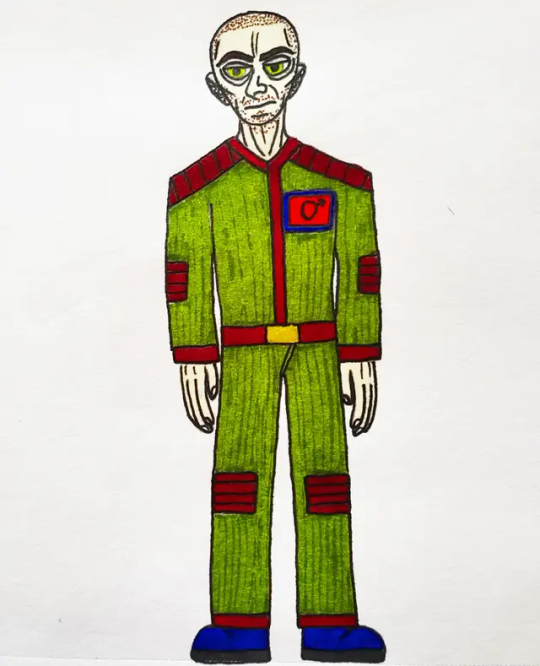
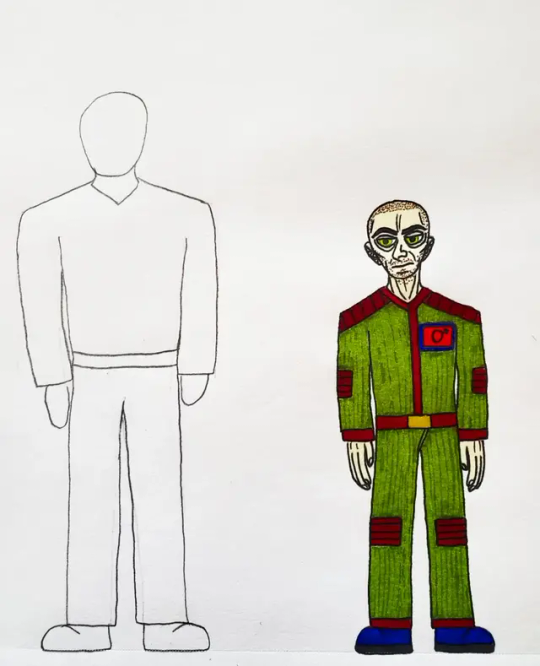
Martian Humans were discovered on the planet Mars, contacted in the year 3990. These creatures are the genetically modified descendants of Humans, who found that it was impossible to gestate healthy offspring under the natural gravity of the planet. Without planetary gravity manipulation technology, their best bet for creating somewhat healthy descendants on the planet was through genetic engineering, selecting for genes that would give them denser muscle and bone tissue to keep them durable enough to perform hard labor, larger hearts to more effectively pump blood throughout their bodies, and shorter stature to curtail risk of malnutrition and allow them to function more efficiently in the small enclosed spaces of spaceships and Martian habitat bases. This full scale colonization of the desolate planet occurred in response to a “white identity crisis” experienced by many pale-skinned humans as a reaction to growing ethnic diversity across earth. After a disastrous “race war” movement manifested across the globe, white purity elites formed political groups focused on establishing a white homeland on Martian soil, mounting expeditions to the red planet where they waged war on and enslaved the prisoner population of preexisting Martian penal colonies, creating a caste system to enforce the institution. This produced the all white generation of genetically modified Martian offspring that took control of the planet, breeding in great numbers and using their inherited institution of slavery to great effect, expanding mining and plantation operations wider than ever before seen on the planet. Using the massive quantities of uranium formed in the planet’s crust from millennia of radiation bombardment, Martians built the largest nuclear stockpile ever seen in human history. The Martian ethnostate recognized itself as a more “highly evolved” form of “Terran” humanity, considering themselves “Homo sapiens martius” despite all scientific evidence pointing to the fact that they are not genetically distinct enough to be considered a subspecies. The severely limited genetic diversity of Martians led to a bottleneck effect, and eventually inbreeding. Assimilation into the Ecosystem did not go smoothly, put in a few words. There was debate whether or not to exterminate the entire Martian population due to the risk they posed of spreading slavery across the universe and the fact that standard Terran Humans had already joined the collective, but it was decided that this was too extreme and would set a dangerous precedent, so the assimilation process went as usual, ending with the Raid phase dissolving all Martian governmental bodies by force. The Martians were infuriated by this swift defeat but recognized the importance of preserving their species' existence on their homeland and didn't push further. Upon introduction to the Ecosystem, they were disgusted by its multicultural assortment of alien life living alongside one another and mostly kept to themselves, still adorned in their traditional military garb and confident in their slogan that “Father Mars Shall Rise Again”. For decades, several slave states established by Martians on Ecosystem worlds have been broken up, routinely putting the continued preservation of these people's core society into question.
#the ecosystem#martians#speculative physiology#speculative genetics#speculative biology#art#illustration#science fiction#character design#speculative fiction#speculative history#future#alt history#alternative history#humans#genetically modified human#genetically modified humans#genetically modified#scifi
3 notes
·
View notes
Text
Global Tile Adhesives & Stone Adhesives Market Forecast to 2027: Cementitious and Epoxy Chemistries Drive Growth
The global tile & stone adhesives market size is projected to grow from USD 4.7 billion in 2022 to USD 7.0 billion by 2027, at a CAGR of 8.0%. Tile and stone adhesives are used to create a strong and durable bond between tile/stone and the tiling substrate. These adhesives are used to fix ceramic tiles, porcelain tiles, mosaics, marble, and granite to walls and floors in residential, commercial,…

View On WordPress
#adhesive stone wall tiles#Ceramic tile adhesives#Epoxy adhesives#Global Tile Adhesives & Stone Adhesives Industry#Global Tile Adhesives & Stone Adhesives Market#Grout sealers#marble tile adhesive#Mortar additives#natural stone adhesive#Natural stone adhesives#Polymer-modified adhesives#Stone Adhesives Market#stone tile adhesive#thinset for granite#tile & stone adhesives market#tile adhesive market#Tile Adhesives & Stone Adhesives Applications#Tile Adhesives & Stone Adhesives Ecosystem#Tile Adhesives & Stone Adhesives Industry#Tile Adhesives & Stone Adhesives Industry Forecast#Tile Adhesives & Stone Adhesives Manufacturers#Tile Adhesives & Stone Adhesives Market#Tile Adhesives & Stone Adhesives Producers#Tile Adhesives & Stone Adhesives Products#Tile Adhesives & Stone Adhesives Suppliers#Tile Adhesives & Stone Adhesives Technology#Tile Adhesives & Stone Adhesives Trends#Tile Adhesives Market#tile and stone adhesives market#wall stone adhesive
0 notes
Text
The Klamath River’s salmon population has declined due to myriad factors, but the biggest culprit is believed to be a series of dams built along the river from 1918 to 1962, cutting off fish migration routes.
Now, after decades of Indigenous advocacy, four of the structures are being demolished as part of the largest dam removal project in United States history. In November, crews finished removing the first of the four dams as part of a push to restore 644 kilometres (400 miles) of fish habitat.
“Dam removal is the largest single step that we can take to restore the Klamath River ecosystem,” [Barry McCovey, a member of the Yurok Tribe and director of tribal fisheries,] told Al Jazeera. “We’re going to see benefits to the ecosystem and then, in turn, to the fishery for decades and decades to come.” ...
A ‘watershed moment’
Four years later, [after a catastrophic fish die-off in 2002,] in 2006, the licence for the hydroelectric dams expired. That created an opportunity, according to Mark Bransom, CEO of the Klamath River Renewal Corporation (KRRC), a nonprofit founded to oversee the dam removals.
Standards for protecting fisheries had increased since the initial license was issued, and the utility company responsible for the dams faced a choice. It could either upgrade the dams at an economic loss or enter into a settlement agreement that would allow it to operate the dams until they could be demolished.
“A big driver was the economics — knowing that they would have to modify these facilities to bring them up to modern environmental standards,” Bransom explained. “And the economics just didn’t pencil out.”
The utility company chose the settlement. In 2016, the KRRC was created to work with the state governments of California and Oregon to demolish the dams.
Final approval for the deal came in 2022, in what Bransom remembers as a “watershed moment”.
Regulators at the Federal Energy Regulatory Commission (FERC) voted unanimously to tear down the dams, citing the benefit to the environment as well as to Indigenous tribes...
Tears of joy
Destruction of the first dam — the smallest, known as Copco 2 — began in June, with heavy machinery like excavators tearing down its concrete walls.
[Amy Cordalis, a Yurok Tribe member, fisherwoman and lawyer for the tribe,] was present for the start of the destruction. Bransom had invited her and fellow KRRC board members to visit the bend in the Klamath River where Copco 2 was being removed. She remembers taking his hand as they walked along a gravel ridge towards the water, a vein of blue nestled amid rolling hills.
“And then, there it was,” Cordalis said. “Or there it wasn’t. The dam was gone.”
For the first time in a century, water flowed freely through that area of the river. Cordalis felt like she was seeing her homelands restored.
Tears of joy began to roll down her cheeks. “I just cried so hard because it was so beautiful.”
The experience was also “profound” for Bransom. “It really was literally a jolt of energy that flowed through us,” he said, calling the visit “perhaps one of the most touching, most moving moments in my entire life”.
Demolition on Copco 2 was completed in November, with work starting on the other three dams. The entire project is scheduled to wrap in late 2024.
[A resilient river]
But experts like McCovey say major hurdles remain to restoring the river’s historic salmon population.
Climate change is warming the water. Wildfires and flash floods are contaminating the river with debris. And tiny particles from rubber vehicle tires are washing off roadways and into waterways, where their chemicals can kill fish within hours.
McCovey, however, is optimistic that the dam demolitions will help the river become more resilient.
“Dam removal is one of the best things we can do to help the Klamath basin be ready to handle climate change,” McCovey explained. He added that the river’s uninterrupted flow will also help flush out sediment and improve water quality.
The removal project is not the solution to all the river’s woes, but McCovey believes it’s a start — a step towards rebuilding the reciprocal relationship between the waterway and the Indigenous people who rely on it.
“We do a little bit of work, and then we start to see more salmon, and then maybe we get to eat more salmon, and that starts to help our people heal a little bit,” McCovey said. “And once we start healing, then we’re in a place where we can start to help the ecosystem a little bit more.”"
-via Al Jazeera, December 4, 2023
#indigenous#river#riverine#ecosystem#ecosystem restoration#klamath#klamath river#oregon#california#yurok#fishing#fisheries#nature is healing#literally this time lol#united states#dam removal#climate change#conservation#sustainability#salmon#salmon run#water quality#good news#hope#rewilding#ecology#environment
5K notes
·
View notes
Text
Happy Earth Day!

We share this beautiful planet with over two million other species, from wasps the size of a grain of dust to whales larger than an office building. Yet, many of these species now face extinction due to the ways in which we humans have modified the planet to suit our needs. According to the International Union for the Conservation of Nature (IUCN), 13% of birds, 21% of reptiles, 27% of mammals, 37% of sharks, and 41% of amphibians are currently endangered, and some estimates suggest that 28% of all species on Earth are at risk of extinction in the near future. Imagine you woke up tomorrow and more than a quarter of every plant, animal, and fungus, from the elephants at the zoo to the earthworms beneath the soil, simply vanished, never to be seen ever again. If we choose to continue treating our planet so poorly, this will become a reality.
Here at Consider Nature, we believe the best way to protect our planet is to arm ourselves with knowledge! Over the years, we have written many articles on some of Earth’s coolest, weirdest, and most-endangered species, in the hope of inspiring readers to step up to the plate and protect biodiversity. I hope you will spend a few minutes of your Earth Day today reading about some of the species we believe are worth saving.
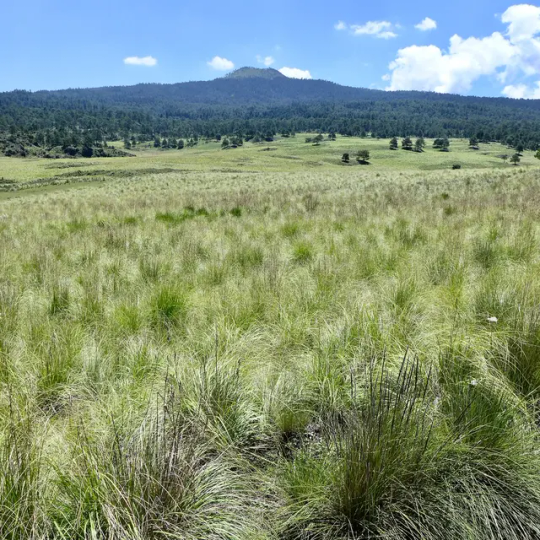
Zacaton grasslands in central Mexico, home to the Zacatuche, or volcano rabbit. Image credit: Jurgen Hoth
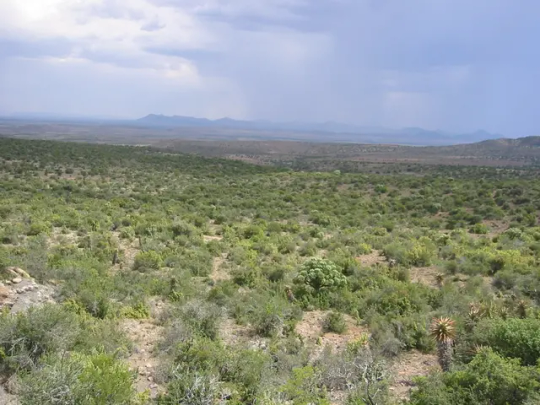
The Succulent Karoo, one of the most biodiverse ecosystems on Earth and home to the Karoo Padloper. Image credit: Tjeerd Wiersma under CC BY-SA 2.0.

The Gulf of California, home of the critically endangered Vaquita. Image credit: Natural World Heritage Sites.
659 notes
·
View notes
Text
There is no compelling reason to believe that capitalism will collapse under rising production costs and degrading natural conditions of production. This is unlikely, as capital can profit even from natural degradation by finding new opportunities for investment in such disasters too. As Naomi Klein has documented, this possibility is clearly visible in what neoliberal ‘disaster capitalism’ has done in the last decades. Capital continues to profit from current ecological crises by inventing new business opportunities such as fracking, geo-engineering, genetically modified organisms (GMOs), carbon trading and natural disaster insurance. Incessantly attempting to shift the rift, capitalism can keep going beyond these natural limits and accumulate more wealth. In contrast, the current level of civilization cannot sustain itself beyond a certain point precisely due to objective natural limits. As far as the logic of capital’s accumulation is being estranged from human life and the sustainability of the ecosystem, the capitalist system might continue to exist, even if all the planetary boundaries are exceeded, but many parts of the earth will be unsuitable for civilization.
Kohei Saito, Marx in the Anthropocene: Towards the Idea of Degrowth Communism
533 notes
·
View notes
Text
Fish of the Day
Today's fish of the day is the Giant isopod!
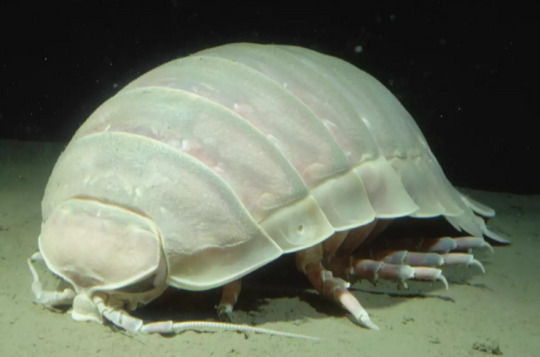
The giant isopod, describes around 20 species in the Bathynomus genus, but most information is based on the Bathynomus giganteus, which is known for being the first giant isopod discovered, and the largest. Giant isopods, as an arthropod, have seven pairs of legs, four jaws, and compound eyes that have over 4,000 facets. The first set of legs is modified into an appendage for grabbing food and bringing it into the mouth, along with attacking prey, and all species with the Bathynomus genus are similar, showing a lack of evolution between populations The full range of this family is unknown, but they can be found around the Indo-Pacific and the Eastern Atlantic ocean. The first time a giant isopod was found and recorded was in 1879 in the Gulf of Mexico, where the largest populations of giant isopods live, with a depth range of 310-2140 meters of depth. Outside of the Gulf of Mexico the other populations have a near identical depth range, and due to their similarity to their close land dwelling cousins, rolly pollies or woodlouse as you might know them, they are one of the textbook examples of deep sea gigantism.
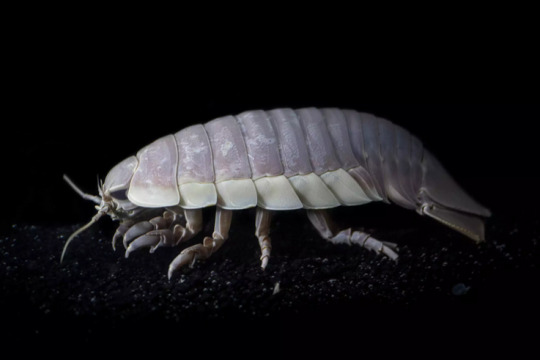
Deep sea gigantism is an observed phenomena where deep sea animals have a habit of getting far larger than their more shallow relatives. Examples of this would be the giant squid, giant sea spider, deepwater stingrays, the bigfin squid,oarfish, and many more. There is currently no encompassing explanation for why this phenomena is so prevalent, but there are multiple theories that have been proven partially correct by different genus. Food scarcity is often referenced, and often thought to be the reason for the giant isopods' large size. as without much food in the deep ocean organisms with the ability to store more food can live for longer periods without prey. Another explanation is the increase in dissolved oxygen, which is often a limiting factor in how large animals can become in their environments. A study of amphipod crustaceans in 1999 discovered their increase in size as the populations found in deeper waters directly increased with the amount of dissolved oxygen. The last and often most damning explanation for deep sea gigantism is the lowered temperature in deeper waters. This one can increase the size in animals by increasing cell size and lifespan, something that can also be found at the world's poles. Deep sea gigantism allows for the giant isopod to get anywhere between 19-36cm (7.5-14.3 inches) in length, with the largest recorded being 20 inches, about the size of a small dog. As compared to their close land relatives, which come in at less than an inch of length.
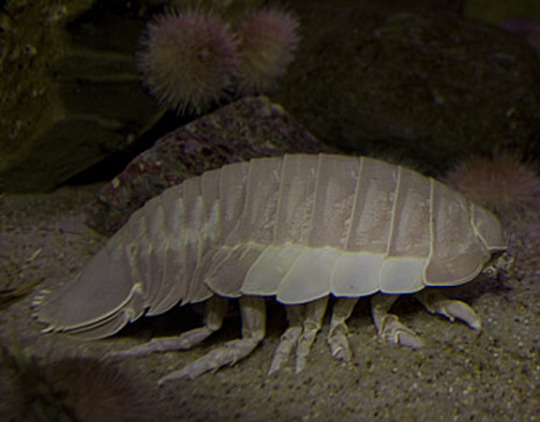
The diet of the deep sea isopod is remarkably similar to that of the land dwelling isopods, as the land dwelling isopods live off of dead or decomposing animals or plant materials. Which is similar to the diet of the giant isopod, which is an essential scavenger and carnivore in the deep. Once believed to be only scavengers, it is now known that giant isopods also actively pursue prey, usually fish, squid, shrimp, crabs, and other deep sea animals they can catch, as shown by a video of an isopod grabbing a dogfish shark and eating its face. These isopods can take down prey several times larger than them, but this may be only when in a confined space, as they don't swim fast and can only attack prey they can catch. But, as scavengers in the deep the giant isopod is primarily known for eating from whalefalls. A whalefall being when the carcass of a dead whale drifts to the deep seafloor, creating huge ecosystem hotspots and specialized animals in deep waters that feed almost exclusively on them. After eating from these whalefalls, giant isopods have been shown to go as long as 5 years in captivity without eating again, and for this reason when in the presence of food they eat far more than their body weight or size, willing to sacrifice locomotion in favor of excess, an easy trade considering they have no natural predators. Despite having no predators, they still have several behaviors similar to land pill bugs, as they can still roll into a ball shape, using their chitin armor to protect themselves, and burrow into the sediment to semi-hibernate.
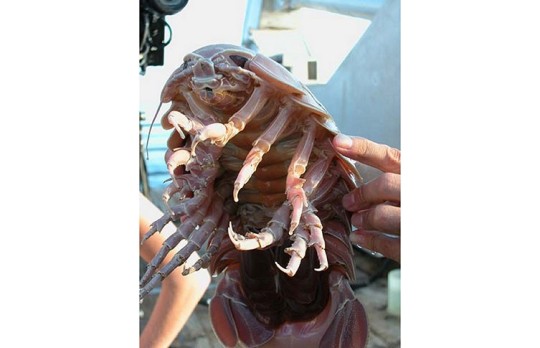
The reproduction of the giant deep sea isopod is like that of many other arthropods, relying on eggs. In the spring and winter months the isopod females will begin brooding eggs, this is done in a pouch above the stomach and it will store anywhere between 20-30 eggs. During the brooding the female will burrow down into the sediment and refuses to leave until all eggs are hatched, at which point the juveniles are left. Captive isopods eggs measure 13mm in diameter and are thought to possibly be the largest marine invertebrate egg. Once born, these juvenile giant isopods will be as large as 4 inches in length ,and set off on their own in a stage called manca. At this stage, these are almost fully developed giant isopods, lacking only the last pair of legs. These will grow over time, and these animals gain size through molts. Their full lifespan is unknown, but estimated to be decades long, with the age of sexual maturity being unknown but estimated anywhere from 15-18 months.

Have a good day, everybody!

#artropod#giant isopod#deep sea#deep sea giant isopod#isopod#giant#isopods#rolly polly#pill bug#sea creatures#marine life#sea life#fish#fish of the day#fishblr#fishposting#aquatic biology#marine biology#freshwater#freshwater fish#animal facts#animal#animals#fishes#informative#education#aquatic#aquatic life#nature#river
351 notes
·
View notes
Text
I don’t personally think laios would be a sparkle dog type furry but I do think he would be overzealously into warrior cats roleplay though he would be the type to modify some of the original lore to “make more sense.” Senshi however would disapprove of the premise. Yer desecrating the fragile wildlife ecosystem Laios. And laios would argue in that world the cats are a built in part of the ecosystem. And senshi would be like It’s not natural. And then marcille would run in scared with her hair frazzled and go I just ran over a pedestrian
441 notes
·
View notes
Text

---



For the Maya, the honey bee is more than an insect. For millennia, the tiny, stingless species Melipona beecheii -- much smaller than Apis mellifera, the European honey bee -- has been revered in the Maya homeland in what is now Central America. Honey made by the animal the Maya call Xunan kab has long been used in a sacred drink, and as medicine to treat a whole host of ailments, from fevers to animal bites. The god of bees appears in relief on the walls of the imposing seacliff fortress of Tulum, the sprawling inland complex of Cobá, and at other ancient sites.
Today, in small, open-sided, thatched-roof structures deep in the tropical forests of Mexico’s Yucatán Peninsula, traditional beekeepers still tend to Xunan kab colonies. The bees emerge from narrow openings in their hollow log homes each morning to forage for pollen and nectar among the lush forest flowers and, increasingly, the cultivated crops beyond the forests’ shrinking borders. And that is where the sacred bee of the Maya gets into trouble.
---
In 2012, the Mexican government granted permission to Monsanto to plant genetically modified soybeans in Campeche and other states on the peninsula without first consulting local communities. The soybeans are engineered to withstand high doses of the controversial weedkiller Roundup; multiple studies have shown exposure to its main ingredient, glyphosate, negatively impacts bees, including by impairing behavior and changing the composition of the animals’ gut microbiome. Though soy is self-pollinating and doesn’t rely on insects, bees do visit the plants while foraging, collecting nectar and pollen as they go. Soon, Maya beekeepers found their bees disoriented and dying in high numbers. And Leydy Pech found her voice.
A traditional Maya beekeeper from the small Campeche city of Hopelchén, Pech had long advocated for sustainable agriculture and the integration of Indigenous knowledge into modern practice. But the new threat to her Xunan kab stirred her to action as never before. She led an assault on the Monsanto program on multiple fronts: legal, academic, and public outrage, including staging protests at ancient Maya sites. The crux of the legal argument by Pech and her allies was that the government had violated its own law by failing to consult with Indigenous communities before granting the permit to Monsanto. In 2015, Mexico’s Supreme Court unanimously agreed. Two years later, the government revoked the permit to plant the crops.
---
As Pech saw it, the fight was not simply about protecting the sacred bee. The campaign was to protect entire ecosystems, the communities that rely on them, and a way of life increasingly threatened by the rise of industrial agriculture, climate change, and deforestation.
“Bees depend on the plants in the forest to produce honey,” she told the public radio program Living on Earth in 2021. “So, less forest means less honey [...]. Struggles like these are long and generational. [...] ”
---
Headline, images, captions, and all text by: Gemma Tarlach. “The Keeper of Sacred Bees Who Took on a Giant.” Atlas Obscura. 23 March 2022. [The first image in this post was not included with Atlas Obscura’s article, but was added by me. Photo by The Goldman Environmental Prize, from “The Ladies of Honey: Protecting Bees and Preserving Tradition,” published online in May 2021. With caption added by me.]
4K notes
·
View notes
Text
UPDATE: THIS IS NOT AS SCARY AS IT SOUNDS. MULTIPLE SITES HAVE THIS EXACT WORDING AND ITS TO PREVENT BEING SUED

Transcription:
Your Rights and Grant of Rights in the Content
You retain your rights to any Content you submit, post or display on or through the Services. What's yours is yours - you own your Content (and your incorporated audio, photos and videos are considered part of the Content).
By submitting, posting or displaying Content on or through the Services, you grant us a worldwide, non-exclusive, royalty-free license (with the right to sublicense) to use, copy, reproduce, process, adapt, modify, publish, transmit, display and distribute such Content in any and all media or distribution methods now known or later developed (for clarity, these rights include, for example, curating, transforming, and translating). This license authorizes us to make your Content available to the rest of the world and to let others do the same. You agree that this license includes the right for us to provide, promote, and improve the Services and to make Content submitted to or through the Services available to other companies, organizations or individuals for the syndication, broadcast, distribution, repost, promotion or publication of such Content on other media and services, subject to our terms and conditions for such Content use. Such additional uses by us, or other companies, organizations or individuals, is made with no compensation paid to you with respect to the Content that you submit, post, transmit or otherwise make available through the Services as the use of the Services by you is hereby agreed as being sufficient compensation for the Content and grant of rights herein.
We have an evolving set of rules for how ecosystem partners can interact with your Content on the Services. These rules exist to enable an open ecosystem with your rights in mind. You understand that we may modify or adapt your Content as it is distributed, syndicated, published, or broadcast by us and our partners and/or make changes to your Content in order to adapt the Content to different media.
You represent and warrant that you have, or have obtained, all rights, licenses, consents, permissions, power and/or authority necessary to grant the rights granted herein for any Content that you submit, post or display on or through the Services. You agree that such Content will not contain material subject to copyright or other proprietary rights, unless you have necessary permission or are otherwise legally entitled to post the material and to grant us the license described above.
759 notes
·
View notes
Text
Little details about the Biopunk Future of 2143:
Coca-Cola, Pepsi and other Usamerican soft drink brands aren't made anymore. Their ecological niche, so to speak, has been taken over by Guaraná Antartica. Most kioscos in Argentina are painted in green and red. Many of them feature modified guaraná vines -adapted to the city, of course- though the brand is concerned they might actually compete with the soda itself.
When you go alone at night (and you better have a good reason to break curfew) you can hear the low hum of the biosecurity towers. Like a palm tree in the shape of an antenna, it hosts buzzing hives of defense organisms arranged in a precise self-contained ecosystem, ready to create antigens and swarm over the city at the warning of a biological attack. At the top, a soft blue light says 'all-clear'. Pray it never turns red.
The post-Ecocide recuperation plan left lots of consequences, but mostly, boxes. Supply boxes of all sizes signed with "FOR EARTH RECOVERY - SUPPLIED BY UNITED NATIONS" in all languages litter the planet. They don't go unused, though; people use them to store all sort of stuff, craft some things, even improvised construction... most have been painted over, but wherever you look, you will find one or two "UN blue" boxes.
Cosmetic genetics had their apogee at the 2080s. Fur, feathers, tails, horns, scales... tegumentary implants were cheap and easy as tattoos and the fastest way to become a biopunk. 60 years later and with the weight of a global biological war, they aren't that appealing anymore, they are rather uncommon in the younger generations. Many even removed them. But you can find around, if you know where to look, old ladies with cat ears and a grandpa swaying a reptilian tail while taking his grandchildren to school. Listen to their stories, they might be interesting.
When one reads "bioforge", even today, one thinks of a nonsensical mess of organs, or sterile metallic vats. Though many are still bacterial brews in giant pots, in truth, bioengineers have long used the most efficient factories build by nature, plants. Rows of vines grow in greenhouses, producing compounds, medicines, and more, stored in fruit, all carefully color-coded. Despite the more appealing visuals, workers still use full body protection and the environment is sterile. These crops are as delicate as a clean room lab.
106 notes
·
View notes
Note
I think that 5E having fanbase that mostly doesn't want to play it is good, actually.
If they really outnumber people who want dungeon combat game, wotc can allow themselves to do a total reboot - make 6E a basically different game, keeping only six stats and foundational systems like d20+stat modifier and AC and HP and classes, but otherwise make a very lite-weight game suited for recreating actual play experience with found family or whatever 5E players want (I don't play 5E).
It's a decision that would benefit everyone. Wotc will profit off new players because they are already trapped in their ecosystem, and even if already avid 5E players don't want to buy new books, newcomers will. 5E players will get a game they actually want. Oldies who don't like it can just move to Pathfinder or OSR, so they won't be deprived of games. Hell, wotc may even start their official line of OSR with new settings and adventures and easily get a share of that market as well!
Like, D&D as it is already suffers from incompatible legacy that can't be thrown out without enraging fans, and if this continues for too long it will collapse. But this way it can survive by transforming into a game that 2020s fandom wants.
Games Workshop pulled way riskier move with Warhammer and ultimately succeeded, I think hasbro can do this as well
Thing is, I don't think WotC will ever do it, because they have pretty much managed to cultivate an audience that is so incurious about game design that they think D&D not supporting the type of gameplay they want isn't a bug, it's a feature.
Ultimately, as I have said before, D&D held hostage to nostalgia because it has to adhere to a certain shape of what D&D "has to be," and even though it's actually one of the worst games for supporting plucky found family heroic narratives people will insist it's good for that because the people in question don't think of D&D's rules in terms of incentive structures and genre emulation, but instead as just "stuff" that the game has which means that the game can do the "stuff." Basically, many of these people think of RPG rules in terms of the shape of dice being rolled, instead of the behaviors that RPG mechanics can actually incentivise and how rules actually shape narrative.
I do agree that D&D not being the game most of its players want it to be is good in some way, but not because I think WotC is ever going to address that contradiction: it means that the aforementioned incurious players who genuinely don't care about game design are kept captured within WotC's walled garden, but at the same time those people who do genuinely care about games producing specific narratives will have to look to reconcile that contradiction elsewhere. We just have to keep throwing Molotov cocktails inside of WotC's walled garden to make people aware of the fact that they live in a false paradise.
68 notes
·
View notes
Text
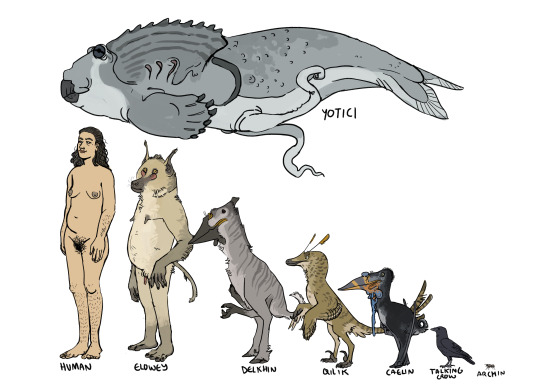
INTRO TO THE SOPHONTS
There are eight distinct sophont genuses and/or species in the known world of the blightseed setting. above are examples of each to show overall difference in anatomy and size.
note- terms like 'genus' 'species' 'subspecies' have no meaning in-universe, and do not necessarily have a role in the formation of cultural groups and identity.
Yotici
Yotici are large marine grazers. Their place on the tree of life is an offshoot of very early fish, all of whos modern representatives live in alternating generations, with a sessile asexual stage that resembles a plant, and a long-living reproductive phase (shown here).
The sessile phase appears in the form of 'gardens' that grow from a seabed where eggs were lain. The reproductive phase begins when tiny yotici (yotlings) develop and emerge en-masse. Yotici do not actively protect yotlings until they begin to speak, and many will die within their first year. (though they provide passive protection by allowing their yotlings to school around them, and through the shielded garden environment)
Their sessile young, however, are closely guarded. Yotici are ecosystem engineers that modify their environments to protect their gardens. They build enclosed and controllable environments with coral, rocks, mangroves, shipwrecks, etc, in shallow waters. They manipulate their environment via their 'tentacles' (actually highly modified genitalia, very dextrous and present regardless of sex).
They have likely domesticated more species than any other sophont, both as an unintentional byproduct of their ecosystem engineering and through intentional breeding. Their most important domestic animal is the garden shark, a species of bullhead kept to protect their sessile young from predation by invertebrates and other small animals.
They primarily eat sea grasses, certain corals, kelp, and occasionally shellfish, crustaceans, and other small animals. They require large, healthy expanses of seagrass to be sustained, and will readily kill or drive away competition. They also take an aggressive stance towards predation, generally being highly aggressive until predators recognize them as a threat leave them alone. This includes encroaching landdwellers- yotici territories utilized by land dwellers are often sites of conflict. Peaceful coexistence in the same waters requires the creation and maintenance of treaties and pacts, historically rare due to difficulties in interspecies communication.
They have aesthetic sensibilities, and may decorate themselves by allowing barnacle growth, or via scarification.
Yotici exhibit no sexual dimorphism and near-ubiquitously do not construct gender. Their genitalia-arms no longer have a sexual function, and they reproduce via group spawning.
The most basic social unit of the yotici is the pod, related individuals who hatched in the same garden and maintain it throughout their lives.
-----
Human
Humans are upright bipedal apes. They are notable among midsized mammals for lacking protective fur, making them vulnerable to both sun exposure and the cold.
There is only one species of human, sole survivors of a once broad family of upright apes. Humans came into behavioral modernity as mobile plains dwelling hunter-gatherers- a highly efficient mode of living utilized to the present day. They are omnivores, capable of adapting to a wide variety of diets and thus a great variety of environments.
The first humans likely developed south of the now inhospitable equatorial Deadlands. Known contemporary populations exist mostly within the eastern and northern parts of the supercontinent.
Humans exhibit modest sexual dimorphism, less pronounced than other apes but with some unique display features such as permanent breasts and bright lips. They can reproduce year-round, and typically bear one child at a time. Childbirth is very dangerous, and many young and mothers die in the process. Their young are completely helpless, and may take over a year to even begin to walk.
The most common basic human social unit is composed of reproductive pairs and their families, though there is tremendous variety in how they form groups.
-----
Elowey:
Elowey are primates, most closely related to lemurs. They average around the same height as humans, but are heavier. They are capable of both bipedal and quadrupedal locomotion.
Two relatively distinct subspecies of elowey are known to survive, though with significant gene flow between the two. Southern elowey (pictured here) are larger on average with bigger guts and more exposed skin, and northern elowey are smaller, with denser fur and slight aquatic adaptations.
Elowey are omnivores, but better adapted towards plant eating. Southern elowey can subsist entirely on plants and digest much tougher plant material than humans with their large guts. Northern elowey rely more heavily on meat, especially during the winter months. The gene for lactase persistence is widely found in northern elowey and largely absent in southern populations.
Elowey have a strong sense of smell. They have two sets of scent glands, which at their most basic communicate territoriality and identity, but the social implications are far broader.
They come from highly territorial ancestors, and most individuals become stressed and uncomfortable when living in dense populations with unrelated elowey. This discomfort is lessened towards members of other species, though they are still prone to social claustrophobia.
Elowey lack significant sexual dimorphism, with nonreproductive females being indistinguishable from males (aside from genitalia, which is brightly colored in males). Reproductive females go through a pronounced estrus, and hormones from pregnancy induce permanent bodily changes, mostly in the form of longer fur and greater muscle mass.
The most basic social unit of elowey is a reproductive pair, their young, and nonreproductive siblings/family. Typical families only have one reproductive pair at a time, and the presence of a reproductive female actually suppresses the fertility of other females. They give birth to 1-2 young at a time, which are helpless for a couple months until they begin to walk.
-----
Caelin and Delkhin:
Caelin and Delkhin are two closely related drakes (pterosauroids of this setting), with locomotive forelimbs (wings) and manipulative hind limbs.
Both are obligate carnivores who supplement their diets only occasionally with plant matter, and as such large populations can only be supported by ecosystems with massive herds, or intensive animal agriculture. Both have ancestors who scavenged on the dead, with active hunting being a byproduct/driving factor of sapience.
Males develop large, colorful wattles, and all possess the ability to create booming songs with their gular sacks (though the calls of males average louder). Females are typically smaller than males in both species, and have dull coloration
The two are closely related enough to produce young, but their eggs are often inviable and the young are rarely fertile. In spite of this, there is frequent gene flow between the two and hybrids are relatively common.
The sex of offspring in both species is determined by incubation temperature, with profound societal implications- often sons are intentionally limited.
The pre-sophont ancestors of both reproduced in lek based mating systems, which remains an influence on modern social behavior. The basic social unit of both caelin and delkhin societies is the lek, typically one (sometimes more) breeding males, several females, and their offspring.
Caelin:
Caelin are about the size of egrets, and capable of powered flight. Their ancestors followed herds of bison, aurox, horses, and khait to scavenge on the dead and dying, which developed into more active management and domestication.
There are a few subspecies of caelin, though most are indistinct from one another (aside from the very small polar caelin).
Caelin are the most widespread sophont of all, having settled anywhere in the world that could support them, though the areas with highest populations are the great steppes of the west. There are few populations historically existing in human-dominated areas, as they tend to compete for food resources.
They are capable of a unique mode of subsistence, scavenger nomadism. Scavenger-nomads fly from place to place seeking dead or dying animals as food sources.
Delkhin
Delkhin are flightless and significantly larger than caelin, standing between 3-5ft in height and weighing several times as much as their relatives. They possess a small horn jutting from the back of the skull, larger and colorful in males.
There are few populations of delkhin outside of Cynozepal and the western grasslands. Their reliance on meat and relatively large size keeps their populations at a low density with great difficulty adjusting to other regions.
Delkhin have notched beaks and strong necks that allow manipulation of larger and heavier objects, and their 'hands' are deft at handling smaller ones.
-----
Qilik
Qilik are roughly turkey sized protobirds. Their ancestors glided, but modern qilik have lost much of their gliding ability as their wings were re-repurposed for manipulation. Their hands have two mobile fingers and one mostly immobile claw.
Qilik would be considered a genus rather than species. There are several species + subspecies of qilik, with the most distinct species being the plains qilik (which are larger, with long thin tails and smaller wings) and the forest qilik (which are smaller, with fans on their tails, broader wings, and are better climbers). More isolated populations have more derived features, such as the small and nocturnal cave dwelling qilik of the deadlands. All are interfertile with significant gene flow between most.
Qilik are omnivores and primarily insectivorous. Their ability to survive on insects makes them one of the least competitive for resources with other sophonts, and as such qilik populations commonly overlap with others and may be indigenous to the same areas.
Most populations are native to forested regions with a high density of insects. Those who have taken up animal husbandry spread to the plains and eat a more meat-based diet.
Qilik have sexual trimorphism - large, dull colored females, smaller, brightly colored males, and larger, dull colored 'feminine' males (faeder).
Mating occurs seasonally, and most individuals lack any significant sex drive out of season. Hens typically mate with multiple males and mating pairs do not form permanent bonds.
The most common social unit is same-gender (or hen/faeder) flocks which are interdependent but live primarily homosocial lives, with hens/faeder doing most work while groups of males care for children. Their social systems are highly plastic, however, and great variety exists.
-----
Talking crows
Talking crows are crows. They produce language and have complex societies, and can intelligently communicate with other sophonts via mimicry. They may give the impression of being child-like or 'animalistic' to other sophonts, as they struggle with large numbers and certain abstract concepts (and live overall similarly to their non-sophont corvid relatives) but excel beyond any other at cognitive mapping, memory, and navigation.
They do not differ significantly in anatomy from other crows, though notched beaks and flexible feet allow for more deft manipulation of tools. Because of their appearance and relative isolation from other sophonts, they are often interpreted as supernatural beings or 'talking animals'.
-----
Archin
Archin are sapient ant colonies. The only known extant population of the species occurs in the Red Rock Archipelago far southeast in the world-sea, and has been isolated from other sophonts for the majority of its history.
Rather than an individual animal, archin consciousness and personhood exists in the collective. Archin consciousness is an emergent property of colonies, with individuals being somewhat akin to cells composing a brain.
They are not a hivemind in any literal sense, rather they use the same methods of chemical and touch communication as most other eusocial insects (only highly specialized and with enough plasticity to communicate abstract concepts and understand language).
A single archin has more complex cognitive ability than most ants, and most vertebrates for that matter (better memory, complex motor skills, problem solving) and fully functional as an organism, but is not sapient on her own. Individuals are also very large for ants- about an inch long, with strong jaws capable of deft tool manipulation,
Archin colonies are composed of ‘units’ of 50-100 ants, each unit being functionally an individual personality. A single archin lives about a year, but a unit can survive and retain memories for decades. A unit usually has a set job within the colony, but their role may shift throughout their life. They will usually choose a 'name', and identify themselves with chemical and some visual signals.
A full colony (~1000-3000 individuals) blurs the lines between a person, family, and tribe. It can function as one broad consciousness, but cannot ‘think’ quickly and efficiently as a unit.
Each colony has one queen, who functions as the womb of the group. Her lifespan determines the lifespan of the colony, (up to 60 years in a healthy individual), during which time she will lay eggs yearly. The queen is no more or less intelligent than any other individual archin and contributes little to the collective consciousness, but her importance to the colony's longterm survival makes her uniquely valued over any other individual.
Drones (reproductive males) function as the sperm cells of the group, and are used to forge alliances with other colonies. They die upon mating and contribute nothing to archin consciousness, though their reproductive value makes them the second-most protected individuals in a colony.
Individual archin instinctually reject 1:1 inter-colony communication, which is necessary to not interfere with their consciousness. When parts of different colonies combine, it can lead to units becoming confused and disoriented, or 'mentally ill'. This may be resolved into rogue units, who roam apart from their colonies until they die (or are successfully divided and restored).
Consciousness does not extend beyond a colony. However, due to the highly plastic nature of archin consciousness, it is possible for colonies who lose their queens or suffer great loss of population to perform mergers with other colonies and form new identities. Relations between colonies vary- each has allies and enemies. Allied colonies may form 'nations' and even have forms of governance, though this is near-universally decentralized.
While their mode of consciousness is quite alien to other sophonts, coexistence, communication, and even friendships are possible. A unit is functionally a person with their own personality, with likes, dislikes, curiosity, favorite foods, aesthetic sensibilities, etc. Archin also exhibit highly abstract thought and have forms of religious sensibility.
#theres a lot of sophonts bc the magic in the setting requires abstract thought to use#which selects for sapience far more frequently than it seems to occur irl#blightseed#elowey#delkhin#caelin#qilik#talking crows#archin#yotici
685 notes
·
View notes
Text
TSAMS Rainworld AU
Okay so I'm batshit insane about rainworld and I want people who don't know what rainworld is to be able to enjoy this au too, so first a basic explanation of the important background relevant to this au.
Rain World is set in a harsh, decayed world where both the environment and the creatures are constantly fighting to survive. The biggest danger is the rain—massive, torrential storms that destroy anything caught outside. Every creature has to adapt, find shelter, and plan their survival around this constant threat. The world itself is a mix of crumbling ruins left by an ancient civilization and thriving ecosystems where every creature plays its part in the food chain.
The rain cycle isn’t random—it’s actually caused by the Iterators, these massive, god-like machines built by an ancient civilization. They overheat so much while running their endless calculations that they evaporate groundwater during the day. That water builds up in the atmosphere and falls back down as catastrophic storms at night.
This overheating issue ties the Iterators directly to the environment—they’re not just relics of the past but active forces that shape how the entire ecosystem works. Every creature has to live with the results, adapting to the rains and to each other in a world that’s always on the edge of collapse.
And then like for the purpose of the AU there's the four sapient creatures that are important.
The Iterators’ bodies are massive towers that dominate the landscape. These structures house complex machinery and biospheres, creating artificial ecosystems that merge with the natural environment. Many of the game’s regions (like subterranean tunnels, industrial zones, and ruined cities) are remnants of their infrastructure. They’re intelligent beyond comprehension, capable of vast calculations, and exist in isolation, suspended in towers that dominate the skyline. Despite their intelligence, they’re constrained by their programming and trapped in a decayed world they cannot fix. They were built to fix the Big Problem (death is not permanent in this world, everything is trapped in a constant state of reincarnation and the higher-intelligence creatures are aware of this fact).
Slugcats are small, agile creatures (about the same size as the iterator puppets if not larger which are android-type things connected to the iterators with wires) with exceptional adaptability and intelligence. They were originally made to clean pipes in the cities and possibly do maintenance on the iterators too, so they have extremely high levels of intelligence for a non-human creature. They represent the middle ground between sentient animals and the god-like Iterators, capable of navigating the dangers of the ecosystem with cleverness and perseverance. While primarily focused on survival, Slugcats can form bonds and interact meaningfully with other sapient creatures, and form communities among their own. They'll also adopt slugpups that they find in the wild. Also they can be genetically modified.
Scavengers are intelligent, humanoid creatures that live in tight-knit groups. They’ve adapted to trade, cooperate, and communicate with other creatures, especially Slugcats. While they can be allies, they’re also opportunistic and will turn hostile if provoked. Their behaviors show a level of societal organization not seen in other creatures, since if you piss one off you piss them all off.
Lizards are apex predators with varied behaviors and abilities. Some are faster, some can climb, and others are better at camouflage. They’re not mindless—Lizards can be reasoned with and even befriended if fed, becoming loyal allies instead of threats. While their sapience is minimal compared to other creatures, their ability to adapt and form relationships with Slugcats sets them apart from the simpler, purely instinct-driven creatures of the game.
I promise this is all the background you need to understand the AU, now it's AU time.
Earth (Watches the Earth) Solar (Singular Solarity) Crescent (Crescent of Tides - Solar's Moon in TSAMS) Angel (Angel Descending - Solar's Sun in TSAMS) – Angel is essentially brain-dead, having fallen into disrepair due to Crescent unintentionally hogging too much water.
The Iterators remain massive, supercomputers tasked with solving the problem of escaping the cycle of life and death. They require water as a cooling agent, and their overheating causes the rain cycle that defines Rain World’s ecosystem.
Ruin, has two pups: Artemis and Apollo (my names for his moon and sun beloved). They’re still with him in the present, as Ruin is recovering from severe and chronic injuries and will be disabled for his whole fucking life.
Ruin was horribly burned and injured but managed to crawl into Crescent of Tides’ (Solar's Moon in Iterator form) tunnels. Crescent finds him in this damaged state and nurses him back to health—but not without ulterior motives. Crescent is desperate for companionship, especially since he can no longer communicate with his siblings (Solar and Angel).
Crescent’s intentions start out well-meaning—he wants to keep Ruin safe—but quickly spiral into possessiveness. He refuses to let Ruin or his pups leave, believing it’s too dangerous outside. Ruin, still recovering and now with pups to care for, is dependent on Crescent despite desperately wanting his freedom. This creates a tense master-pet dynamic where Crescent is a sentient building and Ruin, a disabled Slugcat, relies on him while resenting his control.
Solar and Earth have a tragic relationship. Once best friends, they are now physically too far apart to see each other, and the satellites they use to communicate are degrading. Messages take longer and longer to send, but they keep trying despite knowing their connection is fading.
In the future, Solar bioengineers a Slugcat messenger (Jack) to deliver communication pearls, but that hasn’t happened yet. For now, Earth copes with her loneliness by bioengineering a lizard companion, Monty, who becomes her only friend.
Sun and Moon were separated, probably by scavengers, and are now on very different paths.
Sun ends up at Solar’s structure, which is still maintained enough to stay safe from the rains. Solar, lonely and in need of company, invites Sun to stay. Sun, unsure of how to find Moon and aware of the dangers outside, decides to stay longer than planned.
Moon, on the other hand, is in a frenzy trying to find Sun. He’s furious at the scavengers who separated them and has been killing them in a rage. His single-minded focus on finding his twin makes him dangerous and unpredictable.
While searching for Sun, Moon meets Lunar, another Slugcat, who has a bonded lizard companion (Firefly). The lizard acts as a guard, trading loyalty for food and shelter. Still unsure what I'm going to do with Lunar and Firefly, but they're probably going to end up as mates bc like. I am god and I want hybrid babies and I can do that. Now Lunar, Moon, and the lizard travel together as a group, with Lunar protected by two powerful allies.
At some point, Moon’s violent reputation among scavengers catches up with him, and Eclipse, an exiled scavenger, attacks him out of spite. However, Eclipse later joins their group and becomes a friendly ally.
The Rot is essentially a form of cancer in Rain World’s universe. In this AU, I’m giving it to Nexus. I might shove like. Another iterator in there with him (Helios/Dark Sun beloved) that he fucking gives cancer to when he dies and the rot takes over his body.
#tsams#tsams au#rainworld#rainworld au#crossover au#tsams rainworld au#tsams rwau#rw au#the sun and moon show#tsbs#laes#lunar and earth show
27 notes
·
View notes
Text
Spectember 2023 #02: Carnivorous Ungulates
An anonymous submitter asked for a "derived carnivorous, pack-hunting agriochoerid":

Felichoerus ochlos is fairly similar-looking to its herbivorous relatives, but this cat-sized agriochoerid comes from a lineage that initially specialized in eating fleshy fruits – and then shifted towards eating actual flesh.
With its long cat-like body, forward-facing eyes, clawed digits, and flexible limbs, it's a capable tree climber. Groups of this animal practice cooperative hunting, with one member chasing arboreal prey down to the ground for the rest to mob.
———
And another anon wanted to see an "obligate carnivore bovine":
(I see what you did there. A literal carnotaurus!)
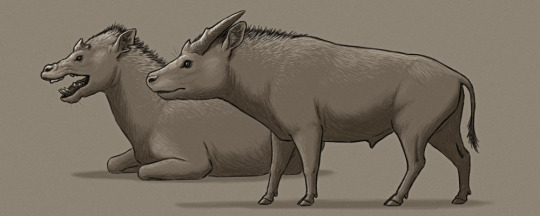
The bulltcher (Carnovitulus grassator) is a sheep-sized descendant of small buffalo that gradually took up more and more omnivorous diets, eventually becoming somewhat entelodont-like opportunists. This particular species has shifted over into hypercarnivory, occupying a predator niche in an ecosystem lacking other types of carnivorous mammal.
Like their ancestors they still lack upper front teeth, and instead have modified their dental pad into an almost beak-like tough keratinized structure that their sharp lower teeth can slice and self-sharpen against.
These animals live in small matriarchal herds, with bulls usually hanging around on the edges of the group to protect from threats. Bulls have larger backwards-pointing horns, used to compete with each other for mates – but the size of these structures on their skulls results in them having slightly less powerful jaw muscles than cows.
Herds hunt cooperatively, pursuing and harassing larger prey until it can be brought down and torn apart.
#spectember#spectember 2023#speculative evolution#agriochoerid#bovine#ungulate#art#science illustration
275 notes
·
View notes
Text
How to beat Deathworlders
I don't know what I want to write and it's a little frustrating. So, to fix that, I'm just gonna throw this at me - Giant Ant Planet
The first call to arms Humanity has declared. They mobilize with unseen speed and precision seven of their mightiest Dreadnoughts, hundreds of transports, and amass fifty thousand soldiers, fully armed and trained on the target.
They are headed to a world Humans scouted as having great potential for life to flourish. How correct they were.
In orbit above the planet Chromathium-2-4, the station Truncated Crescent Ellipses was tasked with conducting experiments to test the viability of Human-digestible flora and fauna living on Chromatoff (as the scientists began to call it for short).
When the fleet arrived, the final message from the station turned out to be true - it had crash landed on the surface. From the chaos of the recordings they received, there was a containment breach and the systems were under attack by some unknown electronic waves and incomprehensible code. A hostile act, but by who?
This was two weeks ago. Whoever it was, they would know the wrath of Humanity. Once we find your traces, there will be no hiding for long.
Preliminary scans show the station was dead and only local creatures and plants appeared, in greater density than elsewhere, but no matter. Just some animals.
The first unmanned craft landed and began exploring the wreckage. All of the digital systems were fried, not a hint of power remained anywhere. Attempts to manually power anything up proved fruitless - the data had been replaced with pure garbage code. Then, the drone vanished underground and went silent. Connection failure.
Orbital sights showed nothing, all frequencies were monitored and were free of unaccounted signals. The next group of drones descended and shortly after touchdown they too were seemingly devoured by the ground, all power and electronic signals cut.
A deep scan showed the same dense biological activity, but looking closer at the data it was like a carpet just below the actual surface layer. And for whatever reason the pulse couldn't penetrate below a few meters. Scanning areas further from the crash revealed a much more detailed and sparsely populated map going down the expected three kilometers.
For the third attempt they kept several drones above the landed ones at different altitudes. The moment the drones on the ground were vanished again, a sudden signal struck the ones floating up to seventy meters above and cut them off as well, but didn't seem to reach any beyond that. The visual was not as detailed as they'd like, but it was enough - the tips of large pincers and antennae and beady eyes. Ants.
The fleet maintained a perimeter around the entire system just in case, and spent half a day consulting professionals and former colleagues of the deceased scientists to get a better understanding of the current situation.
Two experiments the team had worked on before and supposedly continued when relocated to the new station stood out - metabolic acceleration, and unassisted neural interfacing via modified brain waves. Far from the wildest here, such as the self-relocating giant sequoia, but ones that offered a plausible explanation.
Ants serve a variety of critical functions in the maintenance of an ecosystem, so naturally they are a part of most late stage terraforming efforts.
Here, however, something went wrong and they evolved alongside technology at an intimate level. Perhaps deliberately made to do so.
They are spreading fast too. Twelve hours ago the "carpet" of underground ants was roughly two square kilometers. Now it was close to three and a half. In mere weeks they may spread across the entire continent, perhaps make it across (or below?) the seas somehow and ravenously consume all life on this planet before succumbing to extinction themselves.
This world is bountiful. Also, we're here already. Hmm...
Eh, may as well. Plenty of us have seen Starship Troopers and only joined to hopefully one day shoot at alien bugs. Guess these are more like home grown critters, but whatever.
With that brazen attitude (and a quick orbital bombardment) the troop ships landed, well, were forced to crash land the final few meters, but whatever electromagnetic warfare these ants were throwing our way didn't account for reinforced alloy armor and hand-held rail guns. Their sharp pincers, acid throwers, and thick carapaces did however.
Actually, fucking hell, they move real fast underground. Uhh...
This isn't looking so good in retrospect. Did they add cockroach DNA in these bastards too? Some of them literally don't care about losing their head, what the fuck!?
Okay, holy shit, abort mission! Good thing we still install regular ignition engines as an added redundancy to the military ships. Not very fast or efficient, but screw you, burn beneath the thrusters. BURN!
*deep breath*
Okay. So. We lost 831 soldiers, and 4625 are injured. And the ant casualties don't matter cuz they're ants. Super mutant ants. Who are going to take over the world if we don't nuke them. Which might not work anyway because HUMAN scientists made them.
Hoisted by our own petard or something.
Right, let's just chalk it up as a... military exercise gone wrong and quarantine the planet. Wait, make that the whole system.
...so this is what it must've felt like to lose the Emu War...
#humans are space orcs#humans are space australians#humans are space oddities#humans are deathworlders#humanity fuck yeah#story#scifi#carionto#ant#giant ants#you can really see where my brain process switched
242 notes
·
View notes